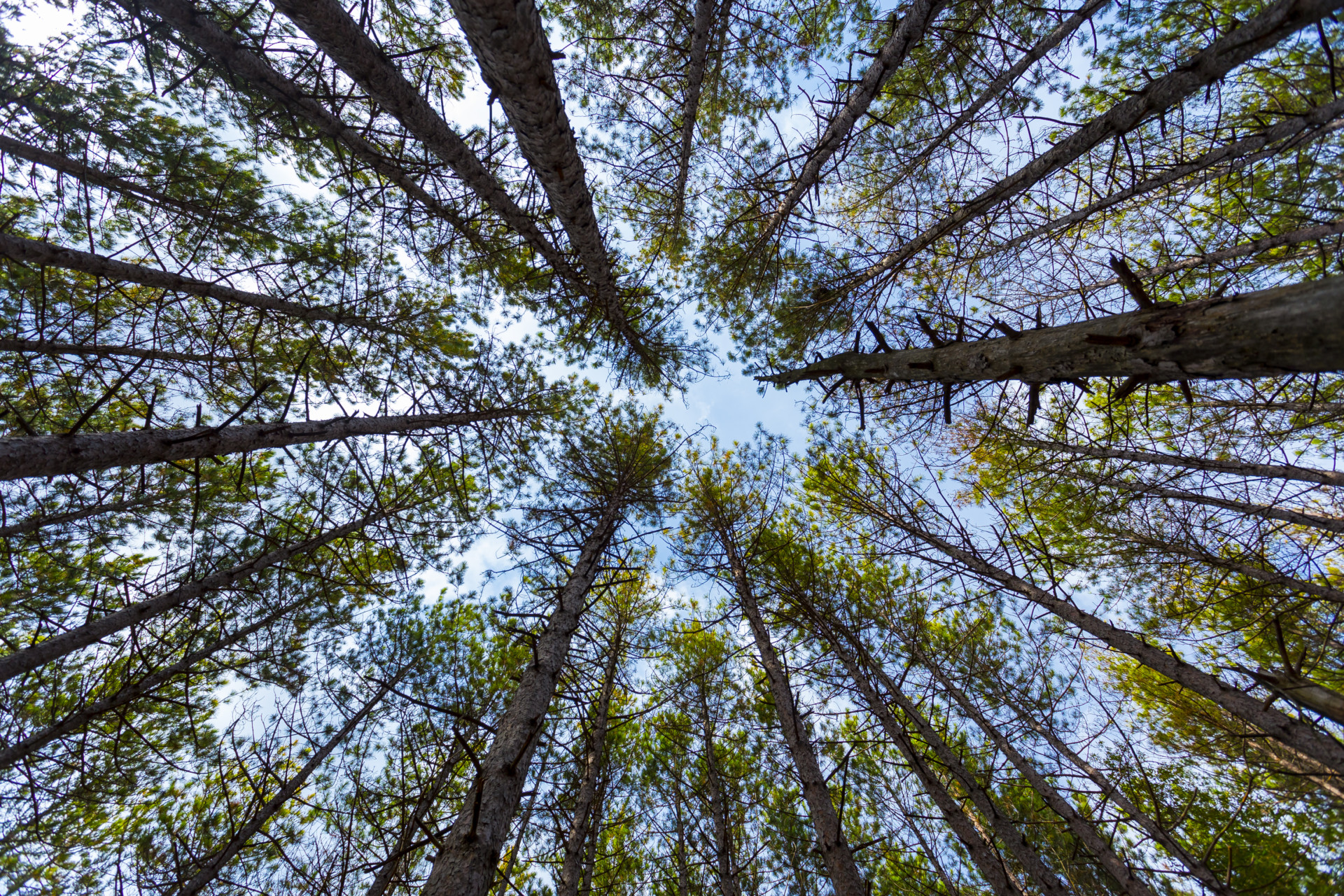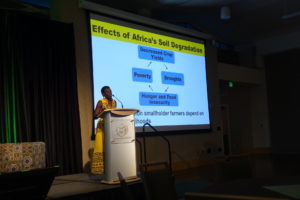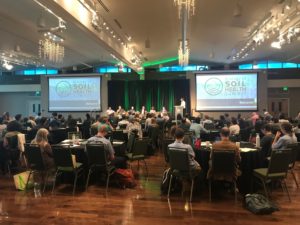Digging into a summer of soils
by Tosha Jupiter | July 12, 2017 11:08 AM

Northwest of Colorado State University, at the top of Rist Canyon, fresh seedlings and sprouts mingle with young aspen trees in the 70-acre Borden Memorial Forest. It’s an environment dedicated to nature and responsible land management, and its floor is made up of the type of earth that excites soil ecologists.
That’s why, since 2010, a group of CSU faculty have brought Summer Soil Institute students to the forest at the start of an intense two weeks of labs and lectures. One of those researchers is Matthew Wallenstein[1], an associate professor in the Department of Ecosystem Science and Sustainability in Warner College of Natural Resources and Department of Soil and Crop Sciences in the College of Agricultural Sciences.
“An intensive soil course would be incomplete if students didn’t get their hands dirty,” said Wallenstein. “Students need to dig in the soils, see how they are structured and layered in the field, and even smell and taste them.”
CSU prime location for soils investigation
Wallenstein explained that CSU is located within miles of three very different ecosystems — the shortgrass steppe (a grassland), agricultural fields and a mountainous forest. Despite their proximity, the soils in these ecosystems contrast in many ways and were formed under very different conditions. Through laboratory analyses, students learn that the soils differ in their physical structure, chemistry and biology.
The Summer Soil Institute offers an integrated view of soil ecology and attracts people from around the globe, including graduate students, K-12 instructors, government officials and people working in the private sector. During the institute, students learn about modern methods and topics in soil ecology, soil science, soil chemistry and physics.
Fiona Jevon, a graduate student at Dartmouth College, said that she had read Wallenstein’s papers and research from CSU professors John Moore[2] and Francesca Cotrufo[3]. Having the opportunity to meet them, hear about their work and get some advice for her own research was one of the best parts about the experience, she said.

“I come from an Ecology and Evolutionary Biology department that doesn’t have any soil ecologists, so the methods that I learned during the institute were really important,” she said. “The way the course was structured also encouraged me to think more holistically about soil. There is a tendency as a graduate student to get myopic, and focus on the one tiny piece of the world that you study. The incredible breadth of topics we covered helped me to think about my work in a broader context. For example, I am interested in how soil microbial communities influence plant growth. John Moore reminded me that soil fauna can have important roles in structuring these microbial communities.”
This year, 18 students representing 15 institutions joined CSU faculty and staff to learn and explore topics at the intersection of soil ecology and soil health.
“It might seem that collecting soils from the field is pretty straightforward — stick a shovel in the ground and scoop,” said Wallenstein. “But, in fact, there are many small decisions that have big effects on the data. Where do we sample? How close to plants? How deep? How many replicates? How do we handle the soils? Students learn how to think through these choices from faculty and staff with decades of experience in soil sampling.”
Bringing together scientists, students, and industry

The Summer Soil Institute was held on the heels of a related meeting where scientists came together with industry, non-profits and policymakers. Colorado State University recently hosted the Ecology of Soil Health Summit with the biennial meeting of the Soil Ecology Society. The goal of the meeting was to identify opportunities to apply the latest soil ecology science to solve soil sustainability challenges.
Ed Ayres, a soil ecologist with NEON, National Ecological Observatory Network, in Boulder, said he’s worked in the gray area between academia and industry. He made the drive to Fort Collins each day to attend the summit and what he appreciated most, he said, was the perspective from small, young companies.
“It’s eye-opening to hear entrepreneurial stories where start-ups have taken a customer-focused approach to soil health challenges,” he said. “It’s an interesting perspective to think about our work in the ‘don’t be afraid to take a shot’ sense.”
Vanessa Bailey, a senior research scientist with Pacific Northwest National Laboratory, said she embraced the numerous discussions about soil health that were generated at the summit.
“It’s important that we create this conceptualization of soil as a living thing that needs to be more broadly recognized beyond the soil ecologist community,” she said. “The soil health initiative, the movement, is important for the era and more useful than soil quality for the visceral connection.”
Learn more about the Summer Soils Institute[4] on the National Resource Ecology Laboratory website.
Wallenstein also directs the Innovation Center for Sustainable Agriculture[5], which focuses on advancing novel solutions to improve soil health.
- Matthew Wallenstein: http://www.nrel.colostate.edu/wallenstein-lab/
- John Moore: http://www.nrel.colostate.edu/moore-lab/
- Francesca Cotrufo: http://soilcrop.agsci.colostate.edu/faculty-2/cotrufo-m-francesca/
- Summer Soils Institute: http://soilinstitute.nrel.colostate.edu/
- Innovation Center for Sustainable Agriculture: https://vpr.colostate.edu/icsa/
Source URL: https://source.colostate.edu/summer-of-soils/
Copyright ©2024 SOURCE unless otherwise noted.